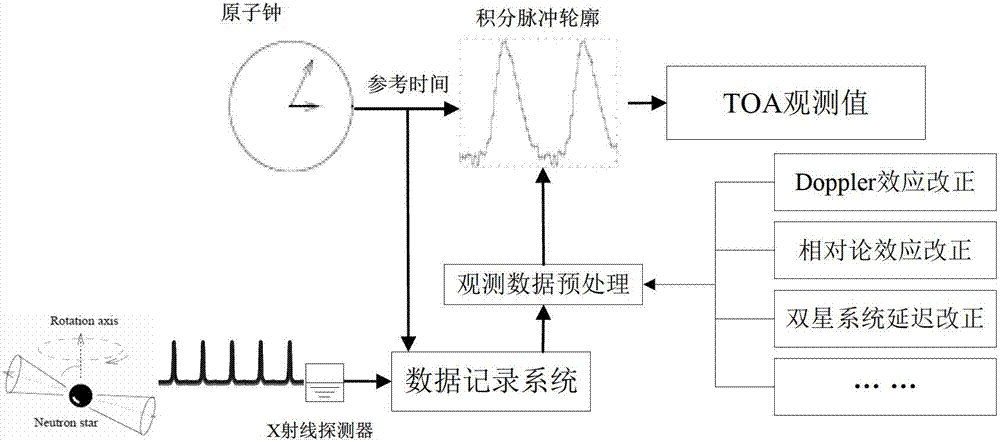Navigation satellite autonomous time synchronization method based on synthetic aperture observation
A technology for navigation satellites and observation satellites, applied in the direction of integrated navigators, etc., can solve the problems of low signal-to-noise ratio of observation signals, prolong observation time, weak signal detection, etc., and achieve the goal of prolonging observation time, shortening observation time and reducing load Effect
- Summary
- Abstract
- Description
- Claims
- Application Information
AI Technical Summary
Problems solved by technology
Method used
Image
Examples
Embodiment Construction
[0035] The present invention comprises the following steps:
[0036] First, a group of millisecond pulsars suitable for time synchronization of navigation satellites is selected according to long-term ground timing observations, and a database of millisecond pulsars for time synchronization (including clock model parameters and astrometric parameters of each millisecond pulsar) is established, and It is stored in the onboard computer of each navigation satellite. In practical application, according to the ephemeris of each navigation satellite and the position parameters of the millisecond pulsar, a group of navigation satellites that can observe the same millisecond pulsar at the same time is selected, and one navigation satellite is selected as the reference satellite. The rest of the navigation satellites are used as coordinated observation satellites, and the observation data of the coordinated observation satellites should be attributed to the reference satellites. All c...
PUM
 Login to View More
Login to View More Abstract
Description
Claims
Application Information
 Login to View More
Login to View More - R&D
- Intellectual Property
- Life Sciences
- Materials
- Tech Scout
- Unparalleled Data Quality
- Higher Quality Content
- 60% Fewer Hallucinations
Browse by: Latest US Patents, China's latest patents, Technical Efficacy Thesaurus, Application Domain, Technology Topic, Popular Technical Reports.
© 2025 PatSnap. All rights reserved.Legal|Privacy policy|Modern Slavery Act Transparency Statement|Sitemap|About US| Contact US: help@patsnap.com



